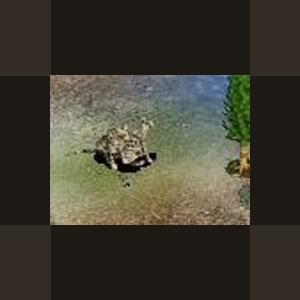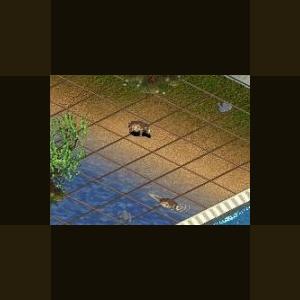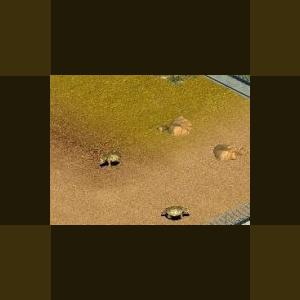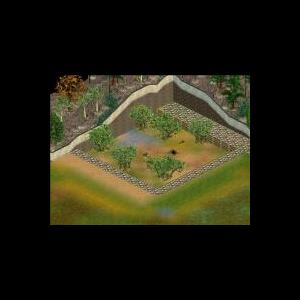279 files
-
Amur Leopard by Moondawg
By Guest
Amur Leopard by Moondawg
The Amur Leopard (Panthera pardus orientalis or Panthera pardus amurensis) is the rarest subspecies of leopard, and the rarest cat on Earth. . A species of leopard that lives in the northernmost climate, they are facing extinction, as there are less than forty Amur leopards left living in the wild.
Of the eight subspecies the Amur, or Far Eastern leopard (Panthera pardus orientalis) shows the strongest divergence in coat pattern. The coat is pale cream (especially in winter) and has widely spaced rosettes with thick, black rings and darkened centres. The length of the coat varies between 2.5cm in summer and 7.5cm in winter.
The Amur leopard (Panthera pardus orientalis) is the northernmost of the eight leopard subspecies. The Amur leopard's range is overlapping with that of the Amur tiger or Siberian Tiger which range extends further to the north. The Amur leopard's historic range extended throughout northeastern ("Manchurian") China, the southern part of Primorsky Krai in Russia and the Korean Peninsula. This range shrank dramatically during the 20th century, due primarily to habitat loss and hunting. Today, it is critically endangered with only 27 to 34 individuals remaining in Southwest Primorye. There are probably up to 10 animals scattered throughout the Chinese Jilin and Heilongjiang Provinces, with the majority of animals concentrated near the Russian border.
The Amur leopard probably went extinct in the wild in South Korea in the late 1960s, although some recent, unconfirmed reports suggest that a few leopards may remain in and around the demilitarized zone between North and South Korea. There are likely still leopards in the rugged northern region of North Korea near the Chinese border, and it is also likely that animals from Southwest Primorye in Russia occasionally cross the border into North Korea, but reliable information is lacking.
The Amur leopard is listed as Endangered by the IUCN and is on CITES Appendix I for protection status.
There are approximately 300 Amur leopards in captivity, mostly in zoos in Europe, North America and countries of the former Soviet Union. Most, but not all, of these leopards are in zoos participating in managed conservation breeding programmes.
· Poaching of leopards and their prey species
Poachers include both poor local villagers and newly rich Russians, mainly from the city of Vladivostok, as well as Chinese nationals who illegally cross the border into Russia. Russian hunters kill many more deer than is officially allowed and Amur leopards are sometimes shot or killed with snares as well. Since 2002 skins or corpses of nine Amur leopards killed by poachers were found in Russia and at least two leopards were killed in China.
· Loss of forest habitat due to frequent fires
The forests on which Amur leopards depend slowly disappear as a result of frequent fires. Local villagers start fires for various reasons, but mainly to stimulate the growth of ferns that are a very popular ingredient in Russian and Chinese dishes.
· Negative impacts of inbreeding
Loss of genetic diversity in the small and isolated Amur leopard population may cause inbreeding depression (reduced numbers due to reduced reproduction and lifespan and increased vulnerability to diseases). However, the results of research so far are inconclusive and additional information on the effects of inbreeding is needed before conclusions can be drawn.
· Development projects
Southwest Primorye is located close to the Russian borders with China and North Korea, making it an attractive area for infrastructure projects such as new railways, gas and oil pipelines and ports. In 2005 and 2006 the Zoological Society of London and other ALTA partners led a successful international campaign against a plan to build an oil pipeline terminal on the coast of the Sea of Japan in the leopard’s range.
· Lack of political commitment to conservation
In recent years nature in Russia has suffered from a lack of political interest in conservation. Negative developments since 2000 include the abolishment of the State Committee for Nature Conservation, revoking the law enforcement rights of Inspection Tiger (an anti-poaching brigade for protection of tigers and leopards), and a reduction of the number of field inspector for protection of forests and animals by approximately 80%.
Male Amur leopards weigh 32-48 kg, with exceptionally large males up to 60-75 kg. Females are smaller than the males at 25-43 kg.
The main prey species of the Amur leopard are roe and sika deer, along with hares and badgers.
Whilst it has been found in other regions that leopards do not do well in areas where they share territory with tigers, this has not proved to be the case in Russia. Studies have indicated that an increased tiger population in the Southwest Primorye area has not adversely affected the leopard population.
Amur leopards in zoos show some evidence of breeding seasonalilty with a peak in births in late spring/early summer. After a gestation period of around 12 weeks cubs are born in litters of 1-4 individuals, with an average litter size of just over 2. The cubs will stay with their mother for up to two years before becoming fully independent. Females first breed at an age of 3-4 years.
In the wild, leopards live for 10-15 years and they may reach 20 years in captivity.
Updated 2010-10-30
Just to save space with less in zip and smaller image.
Nothing new.
540 downloads
0 comments
Updated
-
Aldabaran Giant Tortoise by Jordan
By Guest
Aldabaran Giant Tortoise by Jordan
Giant tortoise from the Seychelles Islands. Loves to swim!
Updated 2010-10-30
Just to save space with less in zip and smaller image.
Nothing new.
538 downloads
0 comments
Updated
-
African Spurred Tortoise by Jordan
By Guest
African Spurred Tortoise by Jordan
The African Spurred Tortoise lives in the deserts of North Africa and is second in size only to the Galapagos Tortoise. It enjoys desert foliage like the quiver tree in its exhibit.
Updated 2010-10-30
Just to save space with less in zip and smaller image.
Nothing new.
631 downloads
0 comments
Updated
-
Aardvark by LAwebTek
By Guest
Aardvark By LAwebTek
The aardvark is an odd-looking beast, resembling a giant, hump-backed rat with the head of an anteater, the snout of a pig, and the ears of a rabbit. It grows up to seven-and-a-half feet (2.3 meters) long, including its rat-like though thick and powerful tail. Adults average 110-150 pounds (50-70 kg), but may weigh as much as 180 pounds (82 kg).
Scientists placed the aardvark in its own order, Tubulidentata, which means tubule toothed. The name derives from the aardvark’s cheek teeth, which resemble flat-crowned columns. Each tooth is made of numerous tubular pulp cavities surrounded by hexagonal prisms of dentine.
Aardvarks are covered with thick pinkish-gray skin that protects them from insect bites and may even save them from predators. It is scantily covered with bristly hair varying from dull brownish-gray to dull yellowish-gray. Hair on the legs is often darker than that on the body. Low forequarters add to aardvark’s hump-backed appearance. Short, stocky legs end in toes bearing long, straight, strong, and blunt claws. There are four toes on each front foot, five on each hind foot. The toes are webbed at the base.
When pursued by enemies, aardvarks have three choices. The first two are run or dig! The aardvark isn’t known as a fast runner, though it is said to escape with surprising speed. However, aardvarks excel at burrowing. An aardvark digging in soft earth can beat several people armed with shovels! Its powerful forefeet can even tear through hard, sun-baked ground. What about that third choice? If cornered, an aardvark fights back. It may strike with its tail or shoulders or rear on its hind legs and slash with its clawed forefeet. A desperate aardvark may even roll on its back, slashing with all four feet.
Like most animals, aardvarks prefer to simply avoid predators. They have acute hearing, and flee for their burrows at the least hint of danger. But their eyesight seems to be poor; they frequently crash into trees, bushes, and other obstructions when running.
Aardvarks aren’t commonly seen because they’re mostly nocturnal. They usually spend the day in their burrows, curled up in a tight circle, the hind limbs and tail protecting the snout. Sometimes, an aardvark may be seen sunning itself at its burrow entrance in the early morning.
The aardvark is today restricted to Africa. It ranges from southernmost Africa (the Cape of Good Hope) to southern Egypt, but is generally widespread in suitable habitat south of the Sahara Desert. Aardvarks make homes by excavating burrows that are about ten feet (3 meters) long. An aardvark tunnel ends in a chamber large enough for the animal to turn in. (Aardvarks generally enter and exit headfirst.)
Aardvarks that burrow in areas prone to seasonal flooding are sometimes forced to evacuate their burrows. Aardvarks reportedly occupy termite nest as temporary shelters (perhaps when they’ve been flooded out of their burrows!).
Numerous aardvarks may burrow in same vicinity. Their abandoned burrows provide homes for many other animals, including large and small mammal predators, porcupines, some birds, and even crocodiles and pythons. In fact, the aardwolf (which is not related to the aardvark) usually lives in aardvark burrows.
It is its diet that caused the aardvark to evolve a form and habits similar to anteaters and other ant and termite-eating mammals. An aardvark’s powerful claws are adapted to breaking open hard clay termite nests. Its narrow head can be thrust into holes and crevices and it laps up insects with a sticky tongue that can be extended as much as twelve inches (300 mm).
Updated 2010-10-30
Just to save space with less in zip and smaller image.
Nothing new.
977 downloads
0 comments
Updated




